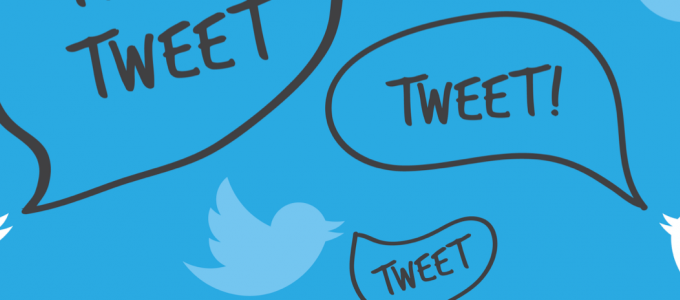Introduction to Twitter: Basics for your Startup
In the world at the moment, social media is becoming increasingly important for staying relevant and engaging more directly with customers. With so many new platforms - Facebook, Instagram, Snapchat, Whatsapp, and Twitter - understanding how each one works will help you use social media as effectively as possible to promote your business.
Why use Twitter?
With only 140 characters per tweet, Twitter is much more engaging and interactive than any other social media platform. If you use it effectively, you can easily be found through the use of buzzwords and hashtags. The platform also allows you to build up new leads and contacts, while engaging with your customers on a less formal and personal level. Finally, having an active Twitter account with popular posts will also increase your website traffic if you link the address in your profile.
First of all, you want your profile to look neat and professional.
Your bio is the first thing anyone viewing your Twitter profile will see. It is recommended that you make your bio simple and specific, with a unique or personal flare, as Lisa Gulasy explains in this article. Also include a link to your website for extra exposure. Your background photo, cover photo, and profile picture are the visual cues that you will send out to the market. Make sure that visuals are clean and appealing, and that your profile picture is a professional headshot of you. Aliko Dangote’s profile below is a good example of this:
Once your profile has been neatened up, you need to start developing content.
What should you tweet about? The simple answer is whatever your audience finds interesting and relevant to them. People on Twitter follow accounts that appeal to them on matters that they enjoy. Therefore you can tweet about events, link blog posts and articles, quotes or even raise questions on a particular topic, as long as it is related to your business. Do not underestimate it is to tweet about yourself (in a professional manner), as well! Do not do it too often, but realise that adding a human face to your brand can make it more relatable to people.
Another key trick to Twitter is knowing how often to tweet. People tend to unfollow accounts that flood their timeline with too many tweets, but forget about accounts that never post anything new. While you should only tweet when you have something fresh and interesting to say, PR experts recommend two tweets a day is the perfect balance. Also remember that if you are attending an exciting event that your followers would be interested in, live tweeting is a good way to keep people interested.
Hashtags, Mentions, Retweets and Likes
These key functions are different ways to be more visible on Twitter, and will help you find the right people and content.
-
The # (Hashtag): This is used to highlight key words that are related to an issue you are discussing. Many people use it to search for tweets or accounts related to them, so if you want to get exposure, it is a great way to do just that! For example, if you are starting a new ecommerce business, using hashtags such as ‘#online #shopping’ will increase your visibility
-
The @ (Mention): You can mention anyone else on Twitter using the ‘@’ sign, and when you do, they will receive a notification. This is a great way to reach out to people within your industry that you may not be able to access any other way. Do this with caution, though: spamming someone will put them off, so make sure you tag people tactfully when an issue is relevant to them
-
The Retweet: Another function on Twitter is the retweet. This is a way to show you support something, or show that you are interested in a particular issue. Twitter users also get notified when you retweet their tweets, so it is another opportunity to increase your visibility
-
The Like: This function allows you to show your support of a tweet, but it will not appear on your timeline to your followers, as a retweet would. All of your likes can be seen in a tab on your profile, so always make sure that your likes are in line with the image you want to portray.
Finally, who should you follow?
Who you follow on Twitter will determine what content appears on your timeline, and thus following the right people will allow you to shape your content into the image you want to create. Figure out who the movers and shakers of your industry are, and follow them: it will help you stay up to date with what is going on, and will provide you with links to more important people. These people are the ones who are seeking out information just to share it with others. Retweeting trustworthy accounts can in turn increase your credibility, and mentioning these people in relevant tweets will show your followers that you are clued into what is going on in your industry.
So, ready to rock Twitter?
Below are some links to websites and apps that can help you monitor and pre-post your tweets. They will help you with planning the timing of your tweets, and ensuring that you keep to a tweeting strategy!
